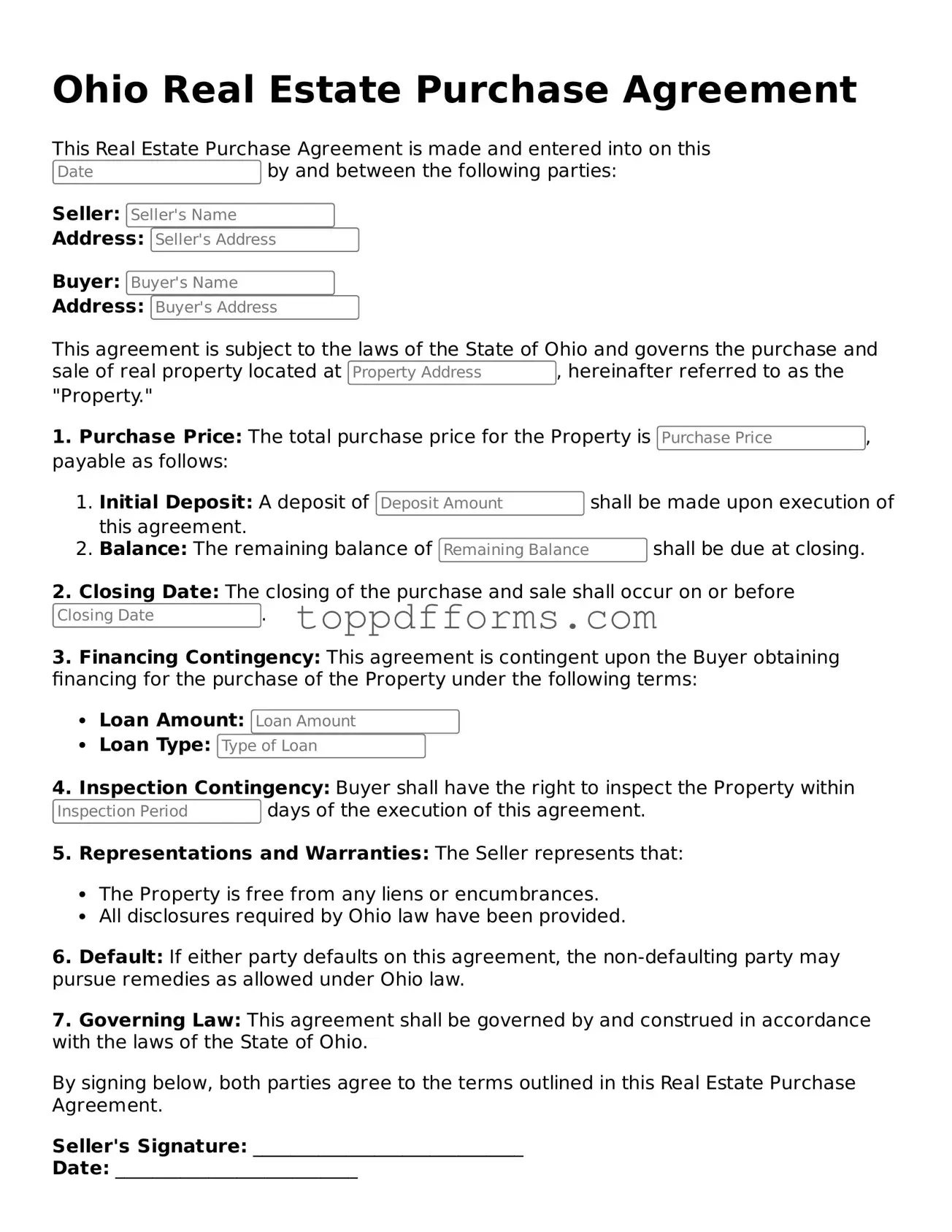What is the Ohio Real Estate Purchase Agreement form?
The Ohio Real Estate Purchase Agreement form is a legal document used in real estate transactions. It outlines the terms and conditions under which a buyer agrees to purchase a property from a seller. This agreement includes important details such as the purchase price, closing date, and any contingencies that may apply to the sale.
Who typically uses the Ohio Real Estate Purchase Agreement form?
This form is primarily used by buyers and sellers of residential real estate in Ohio. Real estate agents often assist in filling out the form, but it can also be used by individuals who are handling the transaction independently.
What information is included in the agreement?
The agreement includes essential details such as the names of the buyer and seller, the property address, the sale price, and any financing arrangements. It may also specify any contingencies, such as the buyer needing to sell their current home or secure financing before the sale can proceed.
Are there any contingencies that can be included?
Yes, contingencies are common in real estate agreements. Buyers might include contingencies related to home inspections, financing, or appraisal results. These clauses protect the buyer by allowing them to back out of the agreement without penalty if certain conditions are not met.
Is the Ohio Real Estate Purchase Agreement form legally binding?
Yes, once both parties sign the agreement, it becomes a legally binding contract. This means that both the buyer and seller are obligated to adhere to the terms outlined in the document. It’s important for both parties to fully understand their responsibilities before signing.
Can the agreement be modified after it is signed?
Modifications can be made to the agreement, but both parties must agree to any changes. It’s advisable to document any modifications in writing and have both parties sign the revised agreement to avoid confusion or disputes later on.
What happens if one party breaches the agreement?
If one party fails to fulfill their obligations as outlined in the agreement, it may be considered a breach of contract. The non-breaching party may have the right to seek legal remedies, which could include enforcing the contract or seeking damages. It’s essential to consult with a legal professional in such situations.
Where can I obtain the Ohio Real Estate Purchase Agreement form?
The Ohio Real Estate Purchase Agreement form can typically be obtained from real estate agents, local real estate boards, or online legal document services. It’s important to ensure that you are using the most current version of the form to comply with Ohio laws.
